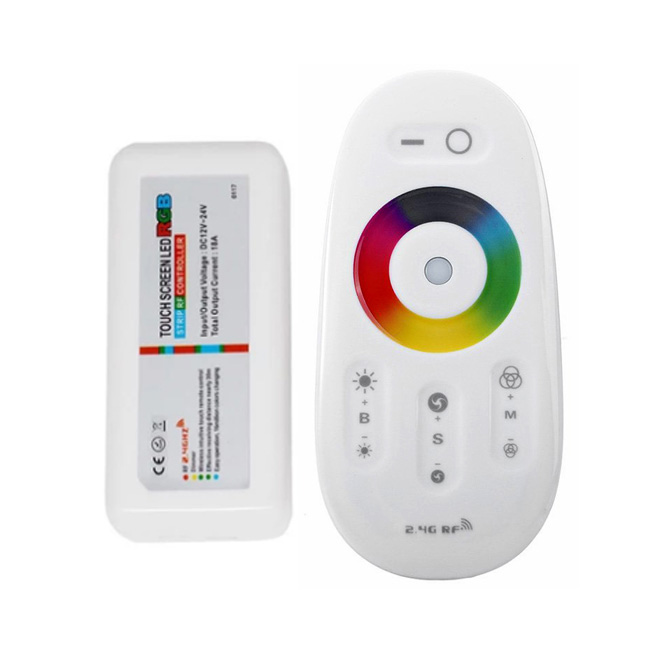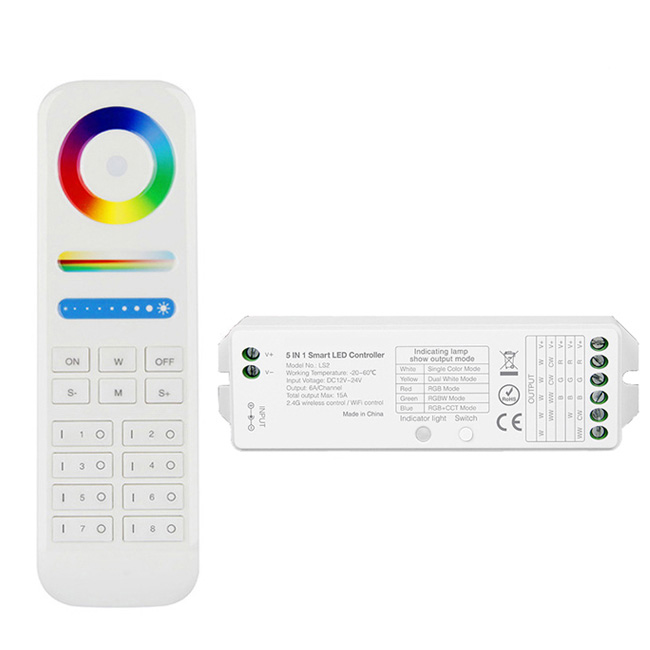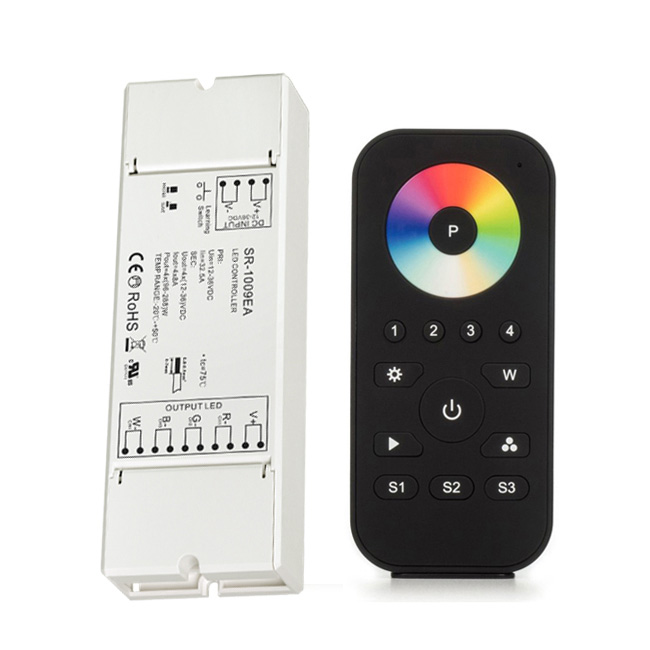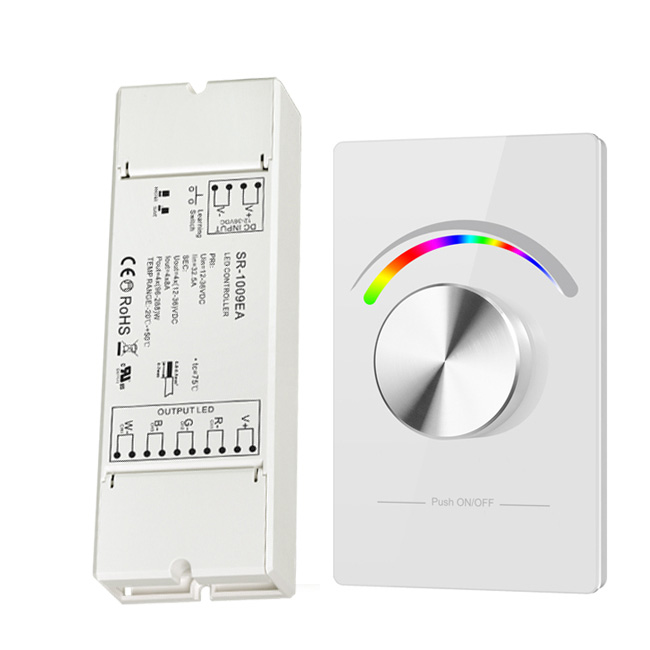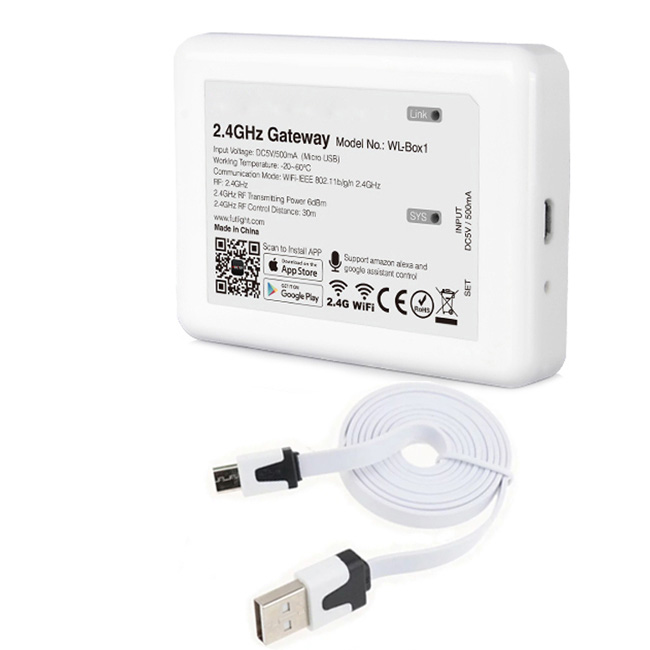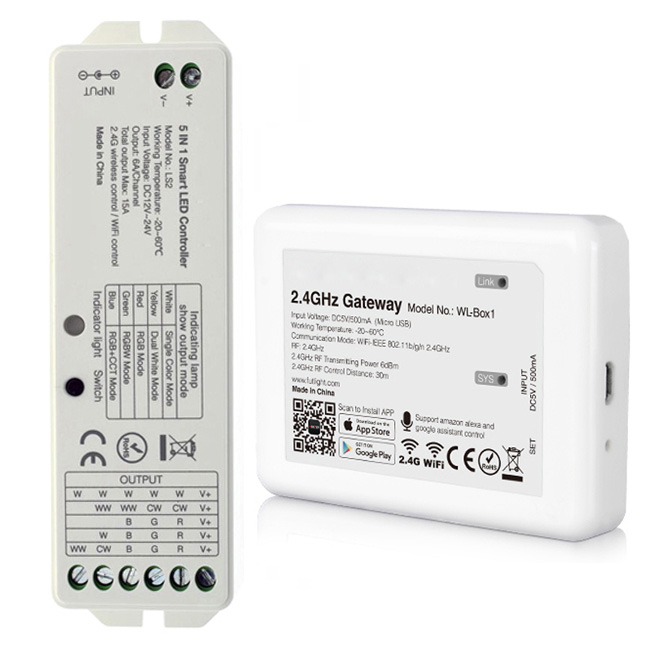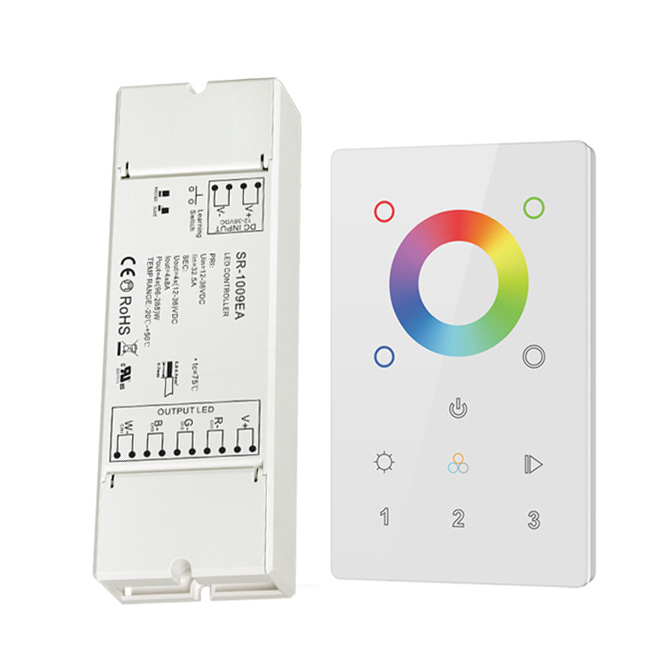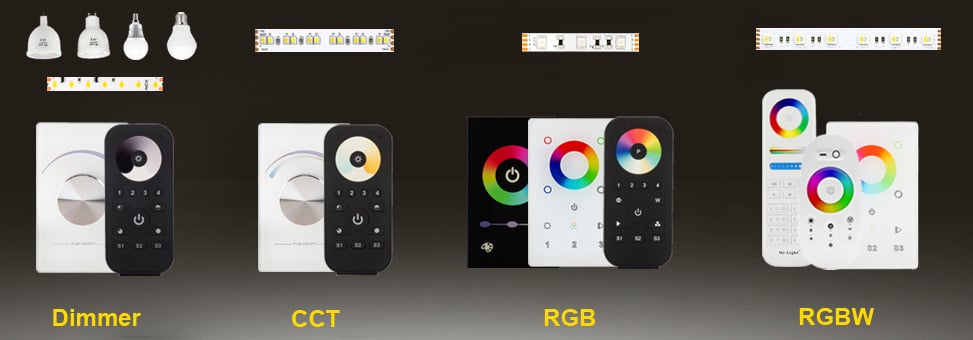 LED ControllerLED controllers, also called LED light controller, are the necessary parts to achieve remote control the lighting effects for LED strip and LED lights, including adjust brightness level, select color, and switch color-changing modes. We sell a large selection of LED controllers, including RF, Bluetooth, WiFi, multi zone LED strip light controller, and DMX LED controller. LED controllers also vary due to the different light fixtures controlled. For example, LED strip controllers have tunable white, RGB, and RGBW controller. Their performance and installation are discussed in detail below, helping you choose a right LED light controller.
Recommended Reading: 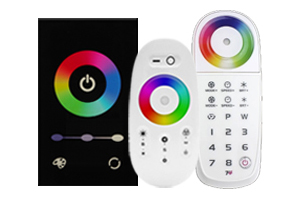 RGB Controller12V 24V RF wireless, Bluetooth, WiFi multi-zone RGB LED controllers for color changing RGB LED Strips. Wall mount or remote.  RGB + White ControllerAll types of multi-zone RGBW LED controllers for RGBW and RGB LED strips to create vivid and vibrant colors. 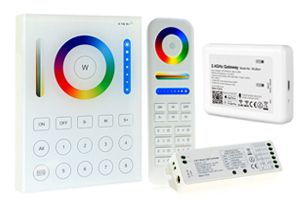 RGB + Tunable White ControllersRGB CCT LED controllers for RGB CCT LED strips, multi zone or WiFi version available. 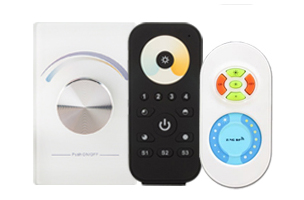 Tunable White ControllerTunable white or white adjustable LED controllers for color temperature changeable LED strip lights.  WiFi ControllerWiFi LED controller for RGB LED strip lights and more. Sync with music, compatible with Amazon Alexa or Google Assistant. 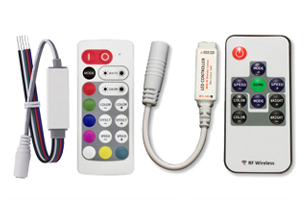 RF ControllerEasy install and easy use of RF LED controllers for white, tunable white and RGB LED strips. Effective and high quality.  Bluetooth ControllerBluetooth LED controllers that use smart phone to control RGB and RGBW LED strips for cars, RVs, and yachts without network.  Single Color DimmerLow voltage 12V and 24VDC LED dimmers. Touch, wall mount, RF wireless, WiFi, Zigbee, and more. 0-100% dimming function. Featured Products
LED controller basic knowledge: How to choose LED strip light controllers?1. Wired LED controllers and wireless LED controllers1-1. Wired LED controllers. Wired LED controller is also called inline LED controller. Wired controllers are connected through hardwires and are placed between LED strip light and power supply. To adjust lighting effects, you need go to the place where the controller is located. 1-2. Wireless LED controller. The remote sender sends out wireless signal to receiver, and receiver controls the LED strips connected to it, such as color selection and tuning, color change, and brightness adjustment etc. The receiver is also placed between LED strip and power supply. Every controller has the function for turning on and off the lights. According to different types of wireless signal, wireless controllers are categorized as following:
LED strip lights with remote is the strip lighting that can be controlled remotely by using any wireless controllers and remotes. It has the advantage of wireless control that the remote can be placed anywhere. This is very convenient to users who don't like to get up and walk to walls for controllers. 1-3. PWM LED controller. PWM controller is the named from another perspective for controllers. PWM stands for Pulse Width Modulation, a method using digital signal to generate analog signal. The adjusting strip lights by controllers is realized via the analog signal created with PWM method. Analog signal is the final and direct signal that controls the LED strip lighting. Almost all controllers are, in this sense, PWM controller. 1-4. The picture below provides an intuitive understanding of IR, RF, WiFi, Bluetooth, DMX, and PWM.  It can be seen from the above picture that IR, RF, WiFi, Bluetooth, and DMX signals work before the controller, while PWM is after. IR, RF, WiFi, Bluetooth, and DMX are different types of signals that communicate to controller, while PWM is the way to create analog signals that leave controller and talk to LED strip lights. So you can say an RF or WiFi controller is also a PWM controller. 1-5. Signal entry for LED controller: Rotary knob controller, touch controller, smartphone controller. Whether it is wired controller or wireless controller, control begins with control signal entry. The entry of signal can be done through rotary knob, press button or key, touch panel or touch wheel, smartphone, etc.
2. What is the difference between 12V and 24V LED strip light controllers?Most LED strip light controllers are 12V and 24V voltage compatible and can be used for both 12V LED strip lights and 24V LED strips. We choose 12V or 24V LED power supply based on the voltage of LED strip lights, not the LED controllers. A controller has different output power on 12V or 24V voltage. It has twice power output when on 24V as on 12V voltage. For correct installation, its power output should be larger than the wattage of LED strip lights. 3. LED strip light controller for single color or multi-color LED strips.3-1. LED dimmer. LED dimmer has the basic necessary functions such as adjust the brightness level or turn on and off the light strip. It is the LED controller for controlling warm white, neutral white, cool white, and single color LED strip. 3-2. Tunable white LED controller. It is used to control tunable white LED strip lights, for changing color temperature, brightness, etc. 3-3. Multi-color LED controller. It is for color management of multi-color strip lights, such as change or select color or color-changing modes.
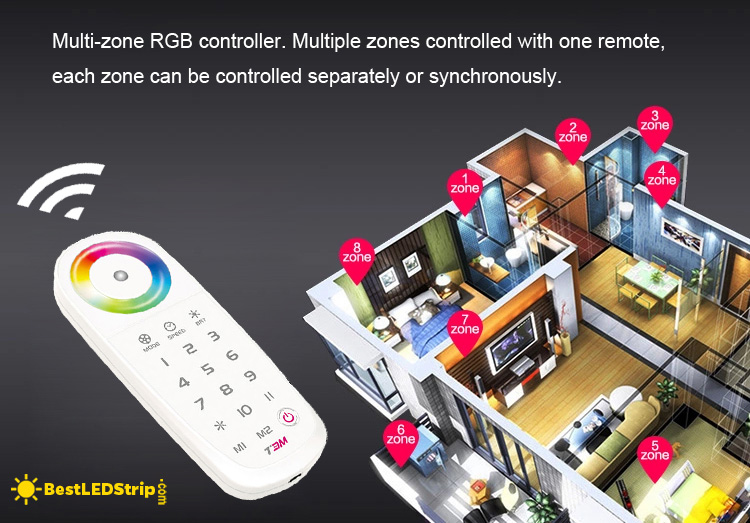 4. RGB LED controller installationRGB LED controller is placed between LED strip light power supply and RGB LED strip. The power supply can also be an AC DC power adapter, depending on the wattage of the RGB LED strip. As for how to connect RGB controller to the LED strip power supply or to the RGB LED strip, please refer to the installation guide: How to install LED strip lights. Below we discuss how to install the RGB controller itself.
 The control remote can be placed close to you. When you want to adjust the strip lighting, you just pick up the remote and operate on the remote. But the remote is vulnerable to the issue of lost, especially for families with kids. It is sometimes difficult to locate the remote after children played with it. In contrast, wall mount controllers don't have the issue, they will always be right there waiting for you. But you have to get up and walk to the wall when you want to make adjustment on lighting. 5. Programmable RGB LED controller.Programmable RGB LED controller are the controller that can customize certain color management functions, such as the color change order, changing modes such as fading or strobe, the speed of each mode, etc. Users create the strip lighting scenes they like. Certain RF RGB controllers belong to programmable LED controller. Their programming function is achieved through pressing a combination of keys with various orders, number of times, and duration. Most WiFi RGB controller and Bluetooth LED controller are programmable RGB controller. Users can program the control functions by the application software installed on cell phone, iPad, or Android tablet. The programming interfaces are self-explaining, easier and more friendly for users to program than RF controllers. The programming functions are more flexible as well. The most complicated and ultimate programming RGB controllers are DMX controller and DALI controller, which we'll discuss later. 6. RGB controller suitable for cell phone.RGB controllers suitable for cell phones can operate via the apps installed, sending WiFi or Bluetooth signal to controllers to control strip lights or other light fixtures. Their control functions are stronger than RF controllers, and usually can easily control multi-zones through grouping by the apps. 
LED controller app
Above picture is the cell phone screen shot of LED controller app, Magic Home LED controller. As shown in the picture, you have a great deal of control choices, such as choose any color on the panel, adjust brightness, change CCT, customized DIY buttons for color-changing modes, sync music with lighting or sound to light, and more. Note: different brand controllers may use different apps, and their functions vary as well. 7. Different combinations of RGB Controllers.RGB LED controller system can have various combinations of remote and receiver controller. This is made possible by integration of various wireless RF and WiFi communication methods. You can design your combination and buy different devices according to your installation and use preference. The following picture gives you examples of different control combinations. Of course, there are many more different combinations not shown by this picture.  8. DMX LED controller: addressable LED controller.DMX stands for "Digital Multiplex". It is a transmission method for the control signal. This transmission method can control up to 512 digital addresses or channels. So this type of controller is sometimes called DMX 512 RGB controller or addressable LED controller. The prominent feature is that it can control all 512 channels separately, and produce almost unlimited lighting effects. So it has the name of RGB controller with endless effects. Previously, the huge size and high cost of DMX controller limited its use only to commercial applications. Technology advancement has made the size much smaller and prices more affordable. Now, DMX controllers are not only seen in large and medium lighting control system, but also, as addressable LED strip controller, are used for smaller installation of RGB strip lighting for homes. DMX decoder converts DMX signals into PWM signals, which are able to control lights like RGB LED strips. DMX home control system is basically a controller connected to DMX receivers that in turn are connected to LED strip lights. According to installation needs, you can connect multiple DMX receivers together and use one LED controller to control them synchronously. This synchronous operations can also be done using RF wireless connection. For larger projects, you can choose different LED controllers, such as DMX controllers using computer. They will provide you more control options for managing RGB LED strip. You can control each DMX receiver separately, such as each area or room in a hotel. You can set in advance the time for turning on and off the lights, or change different areas in a restaurant for the brightness level and color-changing modes(fade or flash etc). You can even separately manage hundreds of flashing disco lights for a club or stage. 9. DALI RGB controller.DALI RGB controllers are usually the control system for larger projects, like for controlling all the lighting for one building. They use a different control protocol called Digital Addressable Lighting Interface, short as DALI. The powerful controller allows users a great deal of lighting control options similar to DMX controllers. Users of DALI controllers are often hotels, large stages, offices and family buildings. Besides LED controller, here we have prepared more related information for your LED strip light project. |


